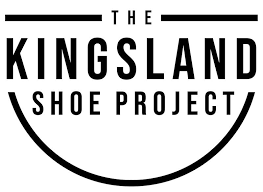FAQs
We have tried to answer the most common questions, but don't hesitate to contact us if you don't find what you need.
Shoe Trees 101
Below are some common questions about Fresh Flows and shoe tree 101
What are shoe trees?
Shoe trees are internal shoe frameworks inserted into shoes to help maintain their shape, prevent creases, and prevent bacteria & mold from growing. Typically, they are made of wood, plastic, or metal. At The Kingsland Shoe Project, our Fresh Flow Shoe Trees are made from premium ABS plastic to offer excellent toebox, midfoot, vamp and tongue support at home or on the go.
Do I need shoe trees for all my shoes?
Using shoe trees can significantly extend the life of your shoes. Shoe trees, like Fresh Flows, are especially beneficial for leather shoes, boots, and athletic sneakers. These materials tend to absorb moisture and lose shape over time. However, all closed-toe shoes can benefit from use of shoe trees to allow sweat and moisture to properly dry and prevent creasing.
What are the benefits of using shoe trees?
Shoe trees help maintain shoes, boots, and sneakers by allowing shoes to dry for 8-12 hours around a supportive internal structure. Below are the main benefits of using shoe trees:
- Shape Retention: Shoe trees help your shoes retain their original structure, preventing unsightly creases and warping of materials. This is especially important for leather shoes that can lose their shape without proper support during the 8-12 hour drying time after use.
- Moisture control: Fresh Flow Shoe Trees provide an open, sturdy structure under the toebox, midfoot, vamp, and tongue to allow shoes to naturally dry while the materials are fully supported by our strong, extra-wide internal framework. This helps eliminate sweat and prevent the growth of odor-causing bacteria and mold, keeping shoes fresh and dry.
- Odor Control: Our open framework helps neutralize unpleasant shoe odor from growing bacteria and mold during the drying process, leaving your footwear smelling fresh and clean.
- Increased Lifespan: By preventing moisture buildup, creases, warping, and structural damage, shoe trees like Fresh Flows can significantly extend the lifespan of your shoes, saving you money over time.
How often should I use shoe trees?
High quality shoe trees should be used whenever you are not wearing your shoes, especially immediately after wears. This allows the shoes to dry out and retain their shape consistently as shoe materials can dry in a warped, creased state if not supported with a size-specific internal framework. Continuous moisture prevention and shape retention will keep your footwear looking and smelling the best for a long time.
How do I use shoe trees?
Insert the shoe tree into your shoe immediately after wearing them. Ensure it fits snugly but isn't too tight so it pushes out on the materials from inside the shoe.
- Insert the appropriate size Fresh Flow Shoe Tree into each shoe after removing them from your feet.
- Ensure the toe of the Fresh Flow Shoe Trees is pushed in far enough to hit the interior toe of the shoe.
- Leave the shoe trees in place until you plan to wear the shoes again. Remove the Fresh Flow Shoe Trees from inside your shoes by pushing down on the push/pull tab (to clear the foam or insole) and pulling back on the shoe tree using the hole on top of the top of the push/pull tab.
How long should I keep shoe trees in my shoes?
For best results, leave the shoe trees in your shoes whenever they are not being worn. This continuous use ensures the shoes maintain their shape and remain dry. Shoe trees are imperative to use in the first 8-12 hours after wears so shoe’s internal moisture can dry around a highly supportive structure that maintains the original shape of the shoe.
Can I use shoe trees to stretch out my shoes?
While shoe trees primarily maintain shape, many offer stretching capabilities. For example, one-size-fits-all shoe trees with springs appear to remove creasing during use but are actually stretching out the toebox and back heel over time from the spring’s tension. As such, spring-loaded shoe trees are not recommended as they contribute to more creasing and warping of the original shoe structure over time. When significant stretching is needed, dedicated shoe stretchers are recommended.
How can I use shoe trees to get rid of shoe odor?
Regular use of high-quality shoe trees like Fresh Flows help keep your shoes dry and fresh, preventing the buildup of bacteria and mold that causes bad odors. Fresh Flow Shoe Trees, with our open structure and 11 air holes in the toebox, are designed to help aerate shoes, sneakers, and boots immediately after wear so bacteria and mold do not grow.
Mold grows in damp environments and by leaving wet shoes in a dark, damp closet that can help spores multiply. Dry a wet shoe or insole outside in the sun or in a warm, lit room before closet storage. Your shoe storage environment should have a relative 40-50% humidity and constant ventilation. Not only can mold grow in the wet shoe, but mold can move to other dry shoes in the same area.
Can I travel with shoe trees in my luggage?
Yes, it is recommended that you support your shoes with quality shoe trees during travel. Lighter, highly durable and supportive shoe trees like Fresh Flows are ideal for maintaining your shoes’ shape and freshness during travel. Wood and cedar trees have traditionally been the shoe tree of choice due to their moisture absorbing qualities, but these shoe trees are heavy and not ideal for travel or today’s modern, active lifestyle. Fresh Flow Shoe Trees are made to protect and aerate shoes, sneakers, and boots anywhere, anytime due to our patented design that fully supports the toebox, midfoot, vamp, and tongue while also being extremely light and durable to protect shoes in bags, luggage, lockers, and more. Fresh Flow Shoe Trees are the best shoe trees in the market for travel as they don’t add any weight to bags or luggage and are also extremely durable with their patented, single mold, aerated design.
Do I need shoe trees for sneakers?
Yes, shoe trees are highly beneficial for sneakers, especially if they are made of leather or other materials prone to creasing. Designed to fully support the toebox, midfoot, vamp, and tongue, our products help maintain the shape and freshness of your sneakers. The gentle but full support Fresh Flow Shoe Trees offer limits creasing and helps maintain the original shoe shape for years.
Do I need shoe trees for boots?
Absolutely. Shoe trees for boots help maintain their original structure and preventing sagging or creasing across the toebox, midfoot, vamp, and tongue. With our elongated push/pull tab that offers support up through the tongue and eyestay, Fresh Flow Shoe Trees offer solid support to most boots made from leather and other creasable materials.
Do I need shoe trees for sandals?
Shoe trees are generally not necessary for sandals, as they don’t require as much shape maintenance as enclosed shoes do. However, if your sandals are made from leather or other high-quality materials that extend across the top of your foot, Fresh Flow Shoe Trees should be used to prevent materials from losing their shape or heavily creasing in-between wears or while traveling.
Purchasing Shoe Trees
Below are some of are common questions about choosing and purchasing the right Fresh Flow for you
Where can I buy Fresh Flow shoe trees?
You can purchase high-quality shoe trees directly from:
- Right here on The Kingsland Shoe Project website!
- Amazon
- Walmart
- EBay
- And select local retailers.
We offer a variety of sizes to ensure a fully supportive fit in many different types of shoes.
How much do shoe trees cost?
The price of shoe trees can vary based on material and quality. Wood/cedar shoe trees can be extremely expensive, with some costing as much as a new pair of shoes. Most cheaply made, one-size-fits-all plastic shoe trees (with metal & plastic components) can be extremely inexpensive but do not offer proper support where you need it most. At The Kingsland Shoe Project, our Fresh Flow Shoe Trees are competitively priced, offering excellent value for their durability and performance. The price for a pair of Fresh Flow Shoe Trees typically range from $5.65-7.66, depending on pack size.
What size shoe tree do I need?
It's essential to choose a shoe tree that matches the size of your shoes. One-size-fits-all shoe trees often push up on the toebox materials and back on the heel to appear to actively remove creasing; however, these shoe trees stretch out materials and warp the original shoe structure – causing more creasing and wear over time. Fresh Flow Shoe Trees at The Kingsland Shoe Project come in various sizes: Medium (6.5-9.5 US men, 8-11 women), Large (10-13 US men, 11.5-14.5 women, and XL (13.5-16 US men, 15-17.7 women) to provide the perfect fit for your shoes.
How do I know if I'm buying a high-quality shoe tree?
The shape, design, and materials are the best indicators of a high-quality shoe tree. One-size-fits-all shoe trees are never a high-quality choice because they do not support the full length, width, and height of all the shapes, angles, and body of the shoe. High-quality shoe trees are tested in a variety of shoe brands like Fresh Flow Shoe Trees (tested in over 50 brands). High-quality shoe trees will also have a sturdy, open structure specially designed to support the full width of the toebox while also maintaining gentle contact with the midfoot, vamp, and tongue so the shoe tree truly supports the original shape of the shoe, boot, or sneaker without stretching materials.
What are the best shoe tree brands?
Besides The Kingsland Shoe Project, other reputable brands include Woodlore and Allen Edmonds. However, our products are crafted with care to out of high-quality ABS plastic to offer superior quality and value at home or on the go.
Shoe Tree Material & Quality
Below are some common questions about various shoe tree materials and their benefits
Are wooden shoe trees better than plastic shoe trees?
Wooden shoe trees, especially cedar, have traditionally been superior to plastic shoe trees because cedar wood absorbs moisture and odors while plastic does not. However, thanks to our patented design of Fresh Flow Shoe Trees, Fresh Flows are a great alternative to heavier wood shoe trees because of their superior design, simplicity, durability, and ability to be used at home, at the gym, or while traveling.
What is the difference between cedar and plastic shoe trees?
Cedar shoe trees absorb moisture and odors, whereas plastic shoe trees do not. However, cedar shoe trees are heavy, have breakable components that wear down over time, and are cumbersome to use. Cedar shoe trees can also damage other shoes if they are set on top of them with their heavy wood and metal materials.
Are there any benefits to using metal shoe trees?
No. They do not absorb moisture and are heavy like wood shoe trees.
Are there any benefits to using metal shoe trees?
No. They do not absorb moisture and are heavy like wood shoe trees.
Ready to increase the life & look of your shoes?
Our simple, breathable, light-as-air internal structure is designed to quickly provide aerated shoe support at home or on the go. Fresh Flow Shoe Trees' size-specific design truly supports the full toebox, midfoot, vamp, and tongue so shoe materials stay fresh, crisp, and damage free.

